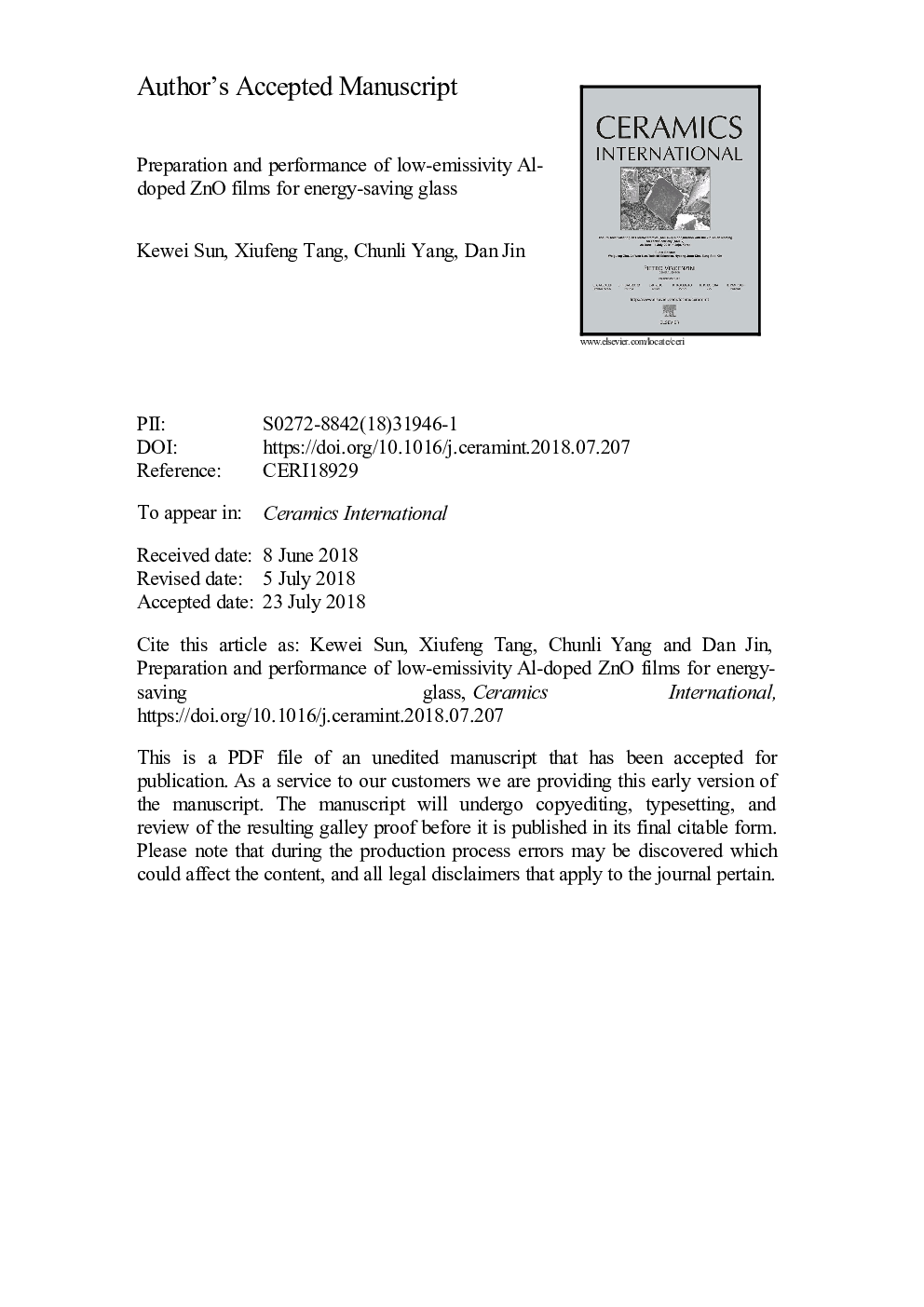| Article ID | Journal | Published Year | Pages | File Type |
|---|---|---|---|---|
| 10155429 | Ceramics International | 2018 | 27 Pages |
Abstract
Low-emissivity Al-doped ZnO films were deposited on the surface of glass by direct current magnetron sputtering method. The infrared emissivity of sample was focused on. The structural characteristics were investigated by the X-ray diffractometry and scanning electron microscopy, while the properties were measured by a four-point probe, an infrared emissivity measurement instrument and an UV-Vis spectrophotometer. The results show that the infrared emissivity of the AZO film is affected by substrate temperature, working pressure and sputtering power. The film deposited at 200â¯Â°C, 1.0â¯Pa and 80â¯W possesses the lowest emissivity, 0.41. There is a very strong correlation between emissivity and resistivity. When the resistivity is low, the infrared emissivity increases with the increase of resistivity, following the Hagen-Rubens relationship. When the resistivity is high, the correlation between them decreases.
Related Topics
Physical Sciences and Engineering
Materials Science
Ceramics and Composites
Authors
Kewei Sun, Xiufeng Tang, Chunli Yang, Dan Jin,
